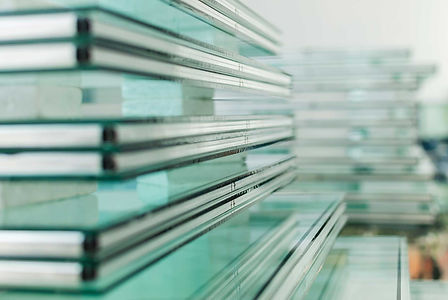
LAMINATED GLASS
INTRODUCTION TO LAMINATED GLASS
Laminated glass is a safety glass comprising two or more glass panes bonded together with an interlayer of polyvinyl butyral (PVB) or ethylene-vinyl acetate (EVA) resin. It is commonly employed for non-structural components such as glass partitions, showers, elevator cabs, and more. For structural components such as glass floors, an SGP (SentryGlas®) interlayer is utilized. These interlayers enhance structural integrity and prevent the glass from shattering into sharp pieces upon impact, rendering laminated glass a favored option for diverse architectural and automotive applications.
THE LAMINATION PROCESS
The lamination process, suitable for both annealed and tempered glass, comprises several steps. Initially, the glass panes undergo meticulous cleaning and preparation within a controlled environment. Next, an interlayer material is inserted between the glass panes and subjected to preliminary heating in a high-temperature oven to enhance adhesion. Subsequently, the glass assembly is transferred to an autoclave, where it undergoes high pressure and heat to liminate any haze caused by the interlayer and finalize the adhesion process. This process bonds the glass and interlayer, resulting in a cohesive and durable unit.
BENEFITS OF LAMINATING GLASS
Safety: With its interlayer holding the glass together upon impact, laminated glass minimizes the risk of injury from shattered glass, making it a secure choice for various applications.
Sound Control: This type of glass provides superior sound insulation, offering a higher STC rating. This makes it ideal for spaces where noise reduction is essential, ensuring a quieter and more comfortable environment.
UV Protection: By blocking harmful UV rays, laminated glass helps protect interior furnishings and surfaces from fading and deterioration caused by prolonged sun exposure. This preserves the aesthetics and longevity of interior spaces, contributing to a more vibrant and appealing environment.
Energy Efficiency: Laminated glass contributes to energy efficiency by providing insulation against heat transfer. This helps maintain consistent indoor temperatures, reducing the need for heating and cooling, ultimately lowering energy costs while promoting sustainability.
In summary, laminated glass is a versatile and practical solution that provides safety, UV protection, and increased sound insulation, making it an ideal choice for a wide range of applications in both residential and commercial settings.